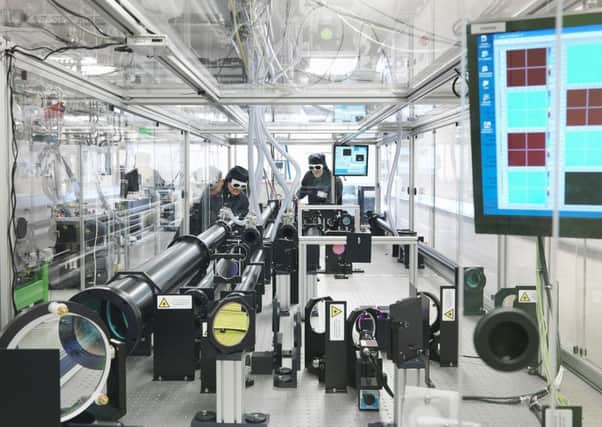Queen’s researchers could help bring new proton therapy for cancer a step closer


The university said the research brings the medical world a step closer to alternative methods of treating cancers using proton beams accelerated by lasers, a method of radiotherapy that could prove to be less damaging to patients.
The study was carried out by a team led by Prof Marco Borghesi and Prof Kevin Prise from Queen’s to increase understanding of how ultrashort proton pulses affect human cells.
Advertisement
Hide AdAdvertisement
Hide AdProton therapy is a new kind of radiotherapy using targeted energy (protons) to destroy tumours rather than standard radiotherapy which uses light energy (photons).
The use of protons is potentially much safer as the beams can target tumours without damaging the surrounding organs or tissue.
The project used laser pulses to investigate the effects of irradiating human skin cells with the proton beam – a key step before lasers can be adopted in a clinical environment to treat cancer.
It compared how DNA damage in human skin cells is repaired after being targeted by a laser-accelerated proton beam compared to how it is repaired after using conventional sources. Researchers plan to investigate this effect further in upcoming experiments.
Advertisement
Hide AdAdvertisement
Hide AdLead author Professor Marco Borghesi, from the School of Mathematics and Physics at Queen’s, said: “This experiment contributes to unravelling some of the underlying biological processes, and shows that laser-driven techniques for producing high-energy particle beams are already mature enough to allow controlled radiobiology experiments in a high-power laser laboratory.”